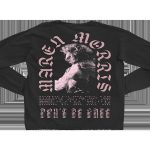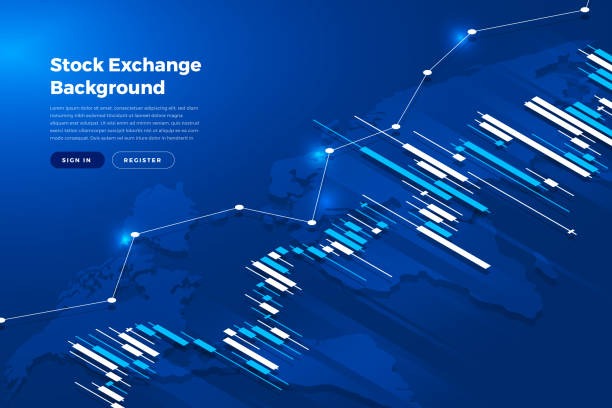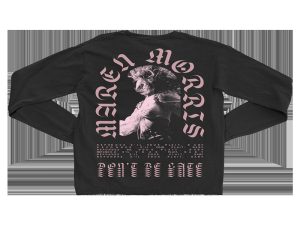Regulated brokers in Tier-1 jurisdictions like those from the UK, US, EU and AU (Australia Singapore, Hong Kong) are required to adhere to strict rules concerning segregated funds for customers and capital adequacy, as well in withdrawal handling disputes, withdrawal handling, and frequently, protection of the negative balances of retail customers. Before you deposit even a penny, verify the broker’s license directly on the regulator’s website, not on the website of the broker. If you see anything that isn’t right, such as misleading license numbers or offshore shell companies, or bonuses that are unusual, stay away.
Why Forex Broker Regulation Matters
“Low spreads” are useless when your broker isn’t able to protect your deposits or honour withdrawals. The regulation for Forex brokers provides the user with legal rights.
- Your money is protected by a ring: segregated client funds sit in a separate location from the broker’s operating cash.
- Capital and Audits : Minimum net capital and periodic reports decrease the risks of a failure in a counterparty.
- Conduct rules: fair marketing, best-execution policies, conflict-of-interest disclosures.
- Complaint pathways: ombudsman or regulator escalation if disputes arise.
- (Often) negative balance protection for retail accounts to cap downside during extreme volatility.
Unregulated or less regulated (offshore) organizations may offer promotions with high leverage and flashy designs but transfer more risk onto the consumer .
Who are the Tier 1 Regulators?
Find brokers approved by these authorities.
- UK: FCA (Financial Conduct Authority)
- US: CFTC + NFA (futures/forex intermediaries)
- EU: National regulators under ESMA rules (e.g., BaFin – Germany, AMF – France, CySEC – Cyprus) Exness Account Opening
- Australia: ASIC (Australian Securities & Investments Commission)
- Singapore: MAS (Monetary Authority of Singapore)
- Hong Kong: SFC (Securities & Futures Commission)
Tip The majority of global brokers are licensed across several jurisdictions. Find out the legal entity in charge of the contract, and which regulatory protections are applicable to them (retail clients as opposed to. professional).
Quick universal checklist
On the website or footer of the broker, you’ll see the company’s id and the official name.
Copy the license/authorization number, not the marketing badge.
Search the regulator’s online register by entering the exact legal name or license number.
The details match of the entity’s name, location, as well as permissions (e.g. dealing in the investment principal/agent, or CFD permissions).
Confirm the passporting/subsidiary you’re actually opening the account with.
Check warnings lists (many regulators maintain blacklists).
If anything doesn’t match–stop.
FCA-specific (for FCA regulated forex brokers)
- Go to the FCA’s Financial Services Register.
- Find a firm’s reference number (FRN) or company name.
- Confirmation of Authorized Status Permissions to trade CFDs/FX Names for trading, Principal Office, Additional Notes (e.g. restrictions or conditions).
- Click “What does this company offer in the UK What can this company do in the UK? confirm that the product (CFDs/rolling Spot FX) is covered.
- Validate the broker’s web URL that is listed in the register to the website you’re using.
US (CFTC/NFA)
- NFA BASIC is a quick method of determining the NFA ID of a firm.
- Verify registration category (e.g., FCM, RFED, IB), the history of disciplinary actions, principals who have been approved and branch offices.
EU/ASIC/MAS/SFC/CySEC
- Every regulator has a searchable database. The same process is repeated: search, match, confirm permissions, make sure the site and the organization are aligned.
Key Protections to Look For
1) Segregated Client Funds (forex)
Brokers should keep your deposit in separate accounts with accredited banks, which are separate from the company’s working capital. This will protect your funds in the event that the broker goes into liquidation.
What to check:
- In the legal documents, you will see the words “client cash” or the “segregation policy”.
- Conduct rules of regulators (some define where and how much the client’s money is kept).
- All compensation schemes that may apply (varies depending on the location and client type).
2) Negative Balance Protection (forex)
NBP reduces the risk for retailers in a variety of regions (e.g. UK/EU) to ensure that you do not gain more than the amount you’ve paid.
What to check:
- Whether NBP applies to your type of account and your residency.
- If there exist certain conditions (e.g., the rules of hedging, abuse).
While seeking global Tier 1 regulation is key, traders in specific regions should also look for localized support and services, which are readily provided by brokers like Exness Indonesia.
3) Disclosure & Execution Quality
- Best execution policy made public and simple to comprehend.
- Execution quality reports and slippage statistics, and venue data (where there is).
- Clear margin/stop-out rules, swap disclosures, and fee schedules.
Forex Broker Red Flags (Don’t ignore These)
- License duplicate The company has a license number from another company, or the number is not found on the register.
- No legal entity details: Missing company number, registered address, or regulator link.
- Unusual bonuses or “guaranteed profits.”
- The cold-calling or DMs are aggressive and pressuring you to make a deposit quickly, or only accepting crypto/USDT.
- Withdrawal friction: odd documentation requests, sudden account re-verification after profits.
- Variable, high-quality spreads in normal times without justification.
- T&Cs that allow trade cancellation in the sole discretion of the broker in ambiguous terms.
- Website replicas (URLs slightly different from the real entity).
Due Diligence Checklist
- Full legal name and company number in footer and legal docs Full legal name and company number found in footer and legal documents
- License/FRN/NFA ID verified on the regulator’s register
- The same entity appears in your account agreement
- Segregated client funds policy confirmed
- Negative balance protection (retail) documented for your region
- Clear order execution policies and margin/stop out policies
- Transparent fees (spreads, commissions, swaps, inactivity)
- Withdrawal Process tested with a small quantity
- Support channels responsive and documented
- No bonus traps, or performance promises No performance guarantees or bonus traps
- No pressure sales or cryptocurrency-only deposits The
- T&Cs don’t allow trading arbitrarily
Example: Practical License Verification Workflow
Pick three candidate brokers.
For each, capture: legal entity, license number, register link, permissions, website URL(s).
Check the website of the regulatory body. Screenshot the Register page for your records.
Start a small account and test deposit/withdrawal.
Compare execution (slippage/fill speed) on a limited basket of trades during normal liquidity hours.
Keep a simple broker scorecard (Regulation Costs Platforms/Tools Support Operations and Trust). Choose the score that has the highest score.
FAQs
Q1 – What is the regulatory requirements for forex brokers?
It is the list of guidelines that all brokers must adhere to (client funds, disclosures, and capital adequacy). This transforms “trust me” (or any other form of assurance) into an auditable obligation.
Q2 – How do I check the validity of a Forex broker’s license quickly?
Find the legal entity’s name + license number from the broker, then look up the register of the regulator (e.g., FCA register, NFA BASIC, ASIC register). Make sure the address, entity as well as the permissions and website correspond to.
Q3 – Are FCA certified Forex brokers always the safest?
“Safest” is based on your personal information, however FCA authorization is widely seen as high-quality due to the strong rules regarding client-money as well as supervision and redress options. Check the company you are signing with and ensure that you review all the small print.
Q4 – What does the term “segregated funds” in forex means?
Your funds are kept in bank accounts that are separate that are not linked to the broker’s operating funds. This lowers the chance of losses should the broker fail.
Q5 – Does every broker provide protection against negative balances in forex?
No. It’s common in the UK/EU for retail customers, however availability varies by region and the type of client. Always check your account type and docs.
Q6 – What are the biggest warning signs for brokers in the forex industry?
License infringements, cloned sites, too-good-to-be-true bonuses, withdrawal obstacles and the pressure selling of crypto-only deposits, vague T&Cs that allow the cancellation of trades.
Final Take
The first thing you need to do is check the broker’s license. Examine the license in the regulator’s register, confirm the segregated client funds as well as (where appropriate) the protection against negative balances. Then, test withdrawals prior to scaling deposits. If a broker fails to clear that bar cleanly, the spreads won’t matter.











More Stories